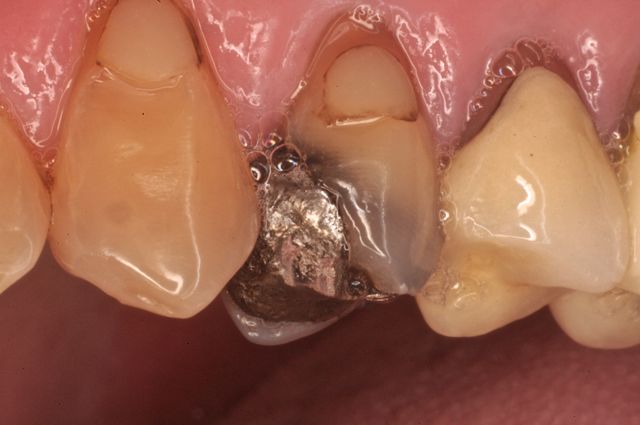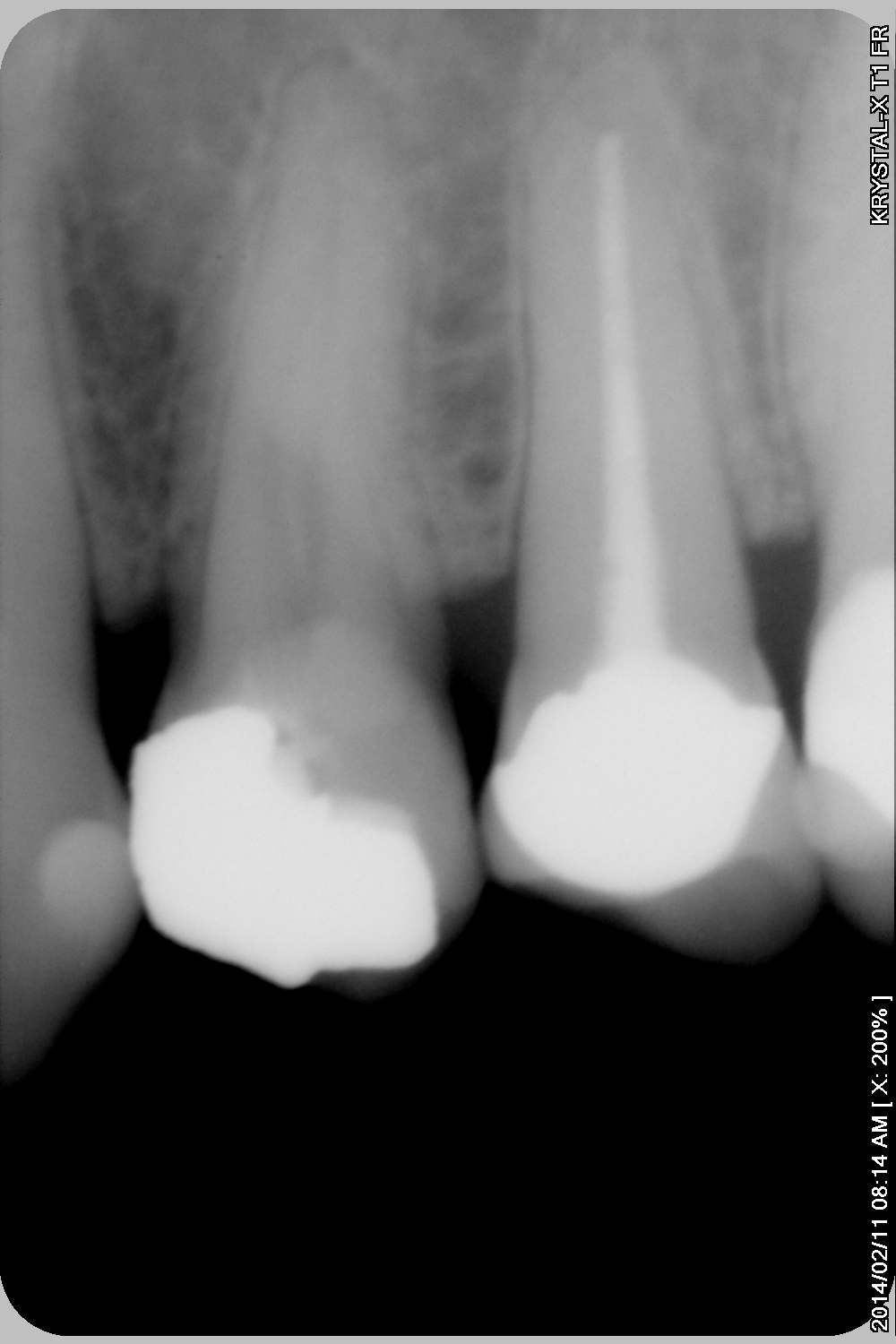|
My Casebook 2014-02-11 In defense of amalgam: Case 2 The patient, a 56 year-old businessman with a PhD in engineering and with vast global business interests, was referred by his oral hygienist for an opinion about the condition of his first upper left premolar tooth (24) (Figure 1).
Figure 1. Note the amalgam restoration with "creeped" and ditched margins as well as buccal resin restoration with discoloured margins.
The tooth was symptom free. Previously the patient had suffered severe post-operative pain after the placement of a porcelain crown on the adjacent premolar (25), necessitating subsequent root canal treatment through the crown. Clinical examination showed the presence of a large amalgam restoration with margins severely "creeped" and ditched. The buccal surface was also restored with resin restoration, the margins being discoloured. No margin was sticky upon probing. Due to slight gingival recession the margins of the restoration were not impinging on the gingiva. Radiographic examination confirmed the absence of any leakage, but the root canal appeared irregular, suggestive of dystrophic changes, e.g. calcifications.
Figure 2. Note the irregular outlines of the root canals and the slight apical widening of the lamina dura. Peri-apically the lamina dura appeared to be ever so slightly widened. (Figure 2) From the history, clinical examination and the radiograph, it was surmised that the restoration, despite its positively ugly appearance, was still sealing and structurally intact. The ditched margins were of no immediate consequence. Significantly, I considered the pulpal condition to be in a state of low-grade, sub-clinical, chronic inflammation. Any attempt at replacement of the restoration would have, arguably, been a predisposing factor of a flare-up of this condition, especially if the buccal resin restoration with its discoloured margins had also been included. Bearing in mind that the patient had in fact previously been exposed to an instance of severe post-operative sensitivity, requiring endodontic intervention, I explained and discussed the situation frankly and openly with the patient. I said that the only way I could guarantee zero post-operative sensitivity would be to do "prophylactic" or elective root canal treatment; thus, of necessity, also doing a crown. The patient immediately and without hesitation asked if it would not be better to allow nature to run its course. I agreed. There was no immediate urgency to replace the restoration, even if it had a most ugly appearance. The condition of this tooth will be reviewed periodically. The fact that the patient commanded massive financial resources played no role in the decision making process. It is not inconceivable, in our post-modern age, that some might have considered exploiting this very situation. The amalgam restoration, ugly as it is, is still functioning, surprisingly well. By so much as touching this tooth with a revolving bur, one can initiate a process with considerable consequences. The key to success once again, is communication and the principle of Primum Non Nocere, First Do No Harm. I will rest well in the knowledge that I had been true to both.
|
| Back | Back to top |




